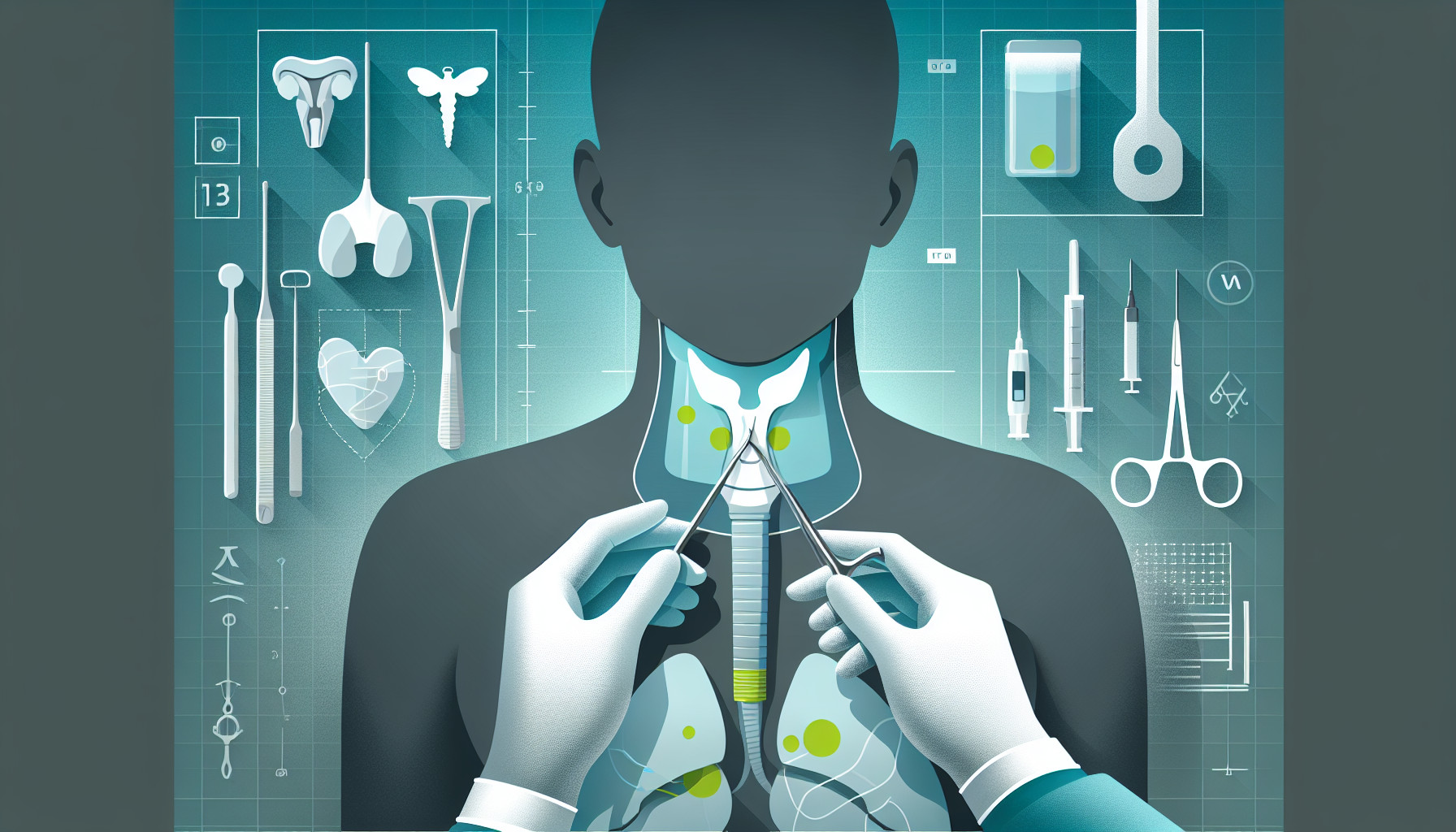Our Summary
This research paper discusses the steps a surgeon should take before performing a thyroidectomy, which is a surgery to remove all or part of the thyroid. This includes looking for signs of compression or invasion during the patient interview, like difficulty breathing, swallowing, or speaking. It also involves understanding certain medical classifications to assess and explain the risk of cancer to the patient.
The surgeon should be able to read a neck ultrasound to recommend the right procedure for the patient’s condition. If there are signs suggesting a certain kind of nodule or clinical markers like difficulty breathing or swallowing, a CT scan or MRI should be ordered.
The surgeon also needs to assess the relationship of the thyroid with nearby organs and evaluate how far the issue has extended towards the aorta, as well as the position of the goiter. This information will help determine the best surgical approach.
It’s not routine to carry out a certain type of imaging test called PET-FDG if there’s a tumor. Only if a specific hormone (TSH) is less than 0.5μU/mL, should a thyroid scan be proposed. Before any thyroid surgery, the surgeon must measure levels of TSH, calcitonin, and calcium in the blood.
FAQs
- What are the signs of compression or invasion that a surgeon looks for during a patient interview before a thyroidectomy?
- What are the EU-TIRADS and Bethesda classifications and why must a surgeon be familiar with them before a thyroidectomy?
- What are the pre-surgical checks that need to be conducted before a thyroidectomy?
Doctor’s Tip
A helpful tip a doctor might tell a patient about thyroidectomy is to make sure to follow all pre-operative instructions given by the surgeon, such as fasting before the procedure and stopping certain medications. It is also important to discuss any concerns or questions with the surgeon beforehand and to have a plan in place for post-operative care and follow-up appointments. Additionally, maintaining good communication with the healthcare team throughout the process can help ensure a successful outcome.
Suitable For
Patients who are typically recommended for thyroidectomy include:
- Patients with thyroid cancer, especially those with high-risk features such as large tumor size, extrathyroidal extension, lymph node involvement, or distant metastases.
- Patients with symptomatic benign thyroid nodules causing compression symptoms such as difficulty breathing (dyspnea), difficulty swallowing (dysphagia), or hoarseness (dysphonia).
- Patients with Graves’ disease who do not respond to medical treatment or who have severe symptoms such as heart palpitations, weight loss, or eye problems.
- Patients with toxic multinodular goiter or toxic adenoma who do not respond to medical treatment or who have severe symptoms such as rapid heartbeat, weight loss, or tremors.
- Patients with large goiters causing cosmetic concerns or difficulty in neck movement.
- Patients with indeterminate or suspicious thyroid nodules on biopsy, especially those with Bethesda category III, IV, or V lesions.
- Patients with recurrent thyroid nodules after previous thyroid surgery or radioiodine therapy.
- Patients with familial thyroid cancer syndromes or other high-risk factors for thyroid malignancy.
- Patients with hyperthyroidism due to thyroid nodules or thyroiditis who prefer definitive treatment with surgery over radioactive iodine or antithyroid medications.
Timeline
Before thyroidectomy:
- Patient presents with symptoms such as dyspnea, dysphagia, dysphonia
- Surgeon evaluates risk of malignancy using EU-TIRADS and Bethesda classifications
- Cervical ultrasound is performed to evaluate the thyroid pathology
- Cervicothoracic CT-scan or MRI may be ordered if necessary
- Evaluation of extension towards adjacent organs and determination of the most appropriate approach for surgery
After thyroidectomy:
- Serum TSH levels, calcitoninemia, and calcemia are measured
- Thyroid scintigraphy may be performed if TSH levels are <0.5μU/mL
- Post-operative care includes monitoring for complications such as hypocalcemia and vocal cord paralysis
- Follow-up appointments are scheduled to monitor thyroid hormone levels and overall recovery of the patient.
What to Ask Your Doctor
Some questions a patient should ask their doctor about thyroidectomy may include:
- What is the reason for recommending a thyroidectomy in my case?
- What are the potential risks and complications associated with the surgery?
- How will the surgery affect my thyroid hormone levels and will I need to take medication afterwards?
- What is the expected recovery time and when can I return to normal activities?
- Will I need any follow-up tests or treatments after the surgery?
- What experience do you have with performing thyroidectomies?
- Are there any alternative treatments or procedures that I should consider?
- How will my voice be affected by the surgery, especially if the vocal cords are near the thyroid gland?
- Will there be any visible scarring after the surgery and how can it be minimized?
- What are the long-term implications of having a thyroidectomy, including potential changes in metabolism and weight?
Reference
Authors: Paladino NC, Hasani A, Hamy A, Cuny T, Trésallet C. Journal: J Visc Surg. 2023 Jun;160(3S):S65-S68. doi: 10.1016/j.jviscsurg.2023.04.002. Epub 2023 Apr 24. PMID: 37100662
